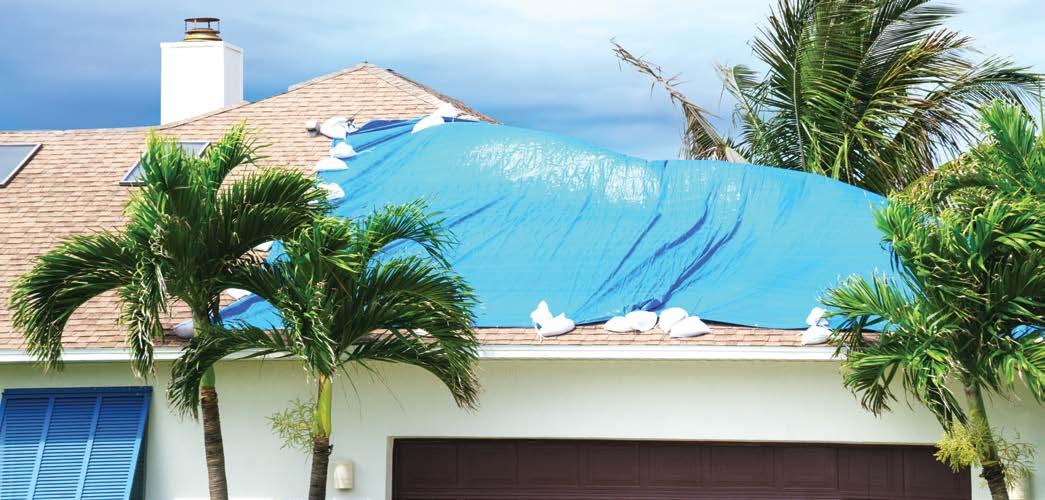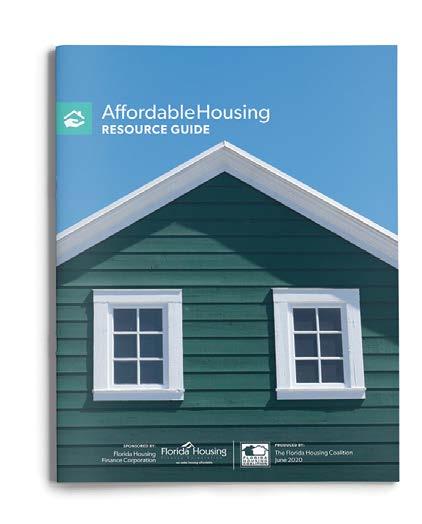
7 minute read
Can Floridians Safely Shelter from a Hurricane in the Midst of a Pandemic?
from Journal Vol 31 no 1
BY: GLADYS COOK
Florida has never faced a hurricane season while in the midst of a pandemic. The Atlantic hurricane season began the first of June. Florida’s housing providers must not only prepare for a more active than normal storm season but must also be prepared to prevent the spread of the COVID-19 virus during evacuation orders when congregate emergency shelters are activated.
Advertisement
The optimal solution is for residents to remain safely in their homes where they may continue to socially distance and selfisolate. The next best situation is non-congregate shelter options such as hotels and motels. But for those residents who must evacuate due to mandatory orders, having a home in a low-lying area, or structures that may not be safe in high winds and/or flooding, congregate shelters may be the only option. Florida’s emergency managers at the state and local level are planning to open shelters that are consistent with the guidelines of the Center for Disease Control, FEMA and the American Red Cross. The opening of emergency shelters in 2020 will be a more complex process that will change the capacity and type of typical sheltering resources.
The prediction of a more active than usual hurricane season is due to warmer water in the Gulf of Mexico and the Atlantic Ocean and the potential for El Nino climate patterns in the Pacific Ocean. This creates atmospheric conditions in the Atlantic more favorable to stronger storms with the potential to make landfall. Residents are advised to heed all watches and warnings throughout the season, which starts in June and ends November 30th. Residents must also plan for the potential for an evacuation order that will require them to make informed choices about where to find shelter. Those who use a public shelter must be prepared for additional screening upon registration, social distancing requirements within the shelter, and additional sanitation and personal protection needs.
Housing providers, including property owners, must plan for vulnerable residents such as those at elevated risk for infection, those who are already ailing from the disease, and persons with
disabilities. The guide will explain the non-congregate sheltering plans being made by emergency management officials. The guide also outlines the importance of conducting mitigation programs year- round to strengthen the housing stock so that residents may safely shelter at home or in the case of evacuation, can safely return home post impact.
FEMA expects emergency managers to operate under a framework of a “locally executed, state managed, and federally supported” approach to the challenge of sheltering in a pandemic. Florida’s emergency managers from each county have been working closely with Florida Division of Emergency Management (FDEM) to prepare for both non-congregate and congregate sheltering. The Red Cross is also participating and has established protocols for the operation of each shelter. It is important to note that most public hurricane shelters provide a safe place to run to before a storm but may also receive survivors after the impact. Thus, protocols for social distancing must be followed during registration and throughout the duration of the shelter operation.
Secure Non-Congregate Shelter First In the event of an emergency or major disaster declaration, FEMA will authorize Public Assistance measures that permit local governments to secure non-congregate sheltering such as hotels, motels, and dormitories. Local emergency responders will anticipate needs and the availability for non-congregate options. They will need to plan for transitional sheltering eventually which is where local housing providers can assist by coordinating with housing options and initial damage assessments. According to FEMA, “With respect to social distancing measures that have been put in place by various states across the county, it is not advisable to set up congregate shelters in an environment heavily impacted by a pandemic.” (FEMA: “Mass Care/Emergency Assistance Pandemic Planning Considerations, Draft April 2020”)
Prepare Congregate Shelters for Social Distancing Congregate shelters will be prepared as usual in schools, community centers, and sports arenas. The operating protocols will be much more complex to protect residents from becoming infected. Where possible, COVID-only shelters will be prepared but in the case of a large shelter, there should be isolation areas for COVID positive, COVID pending, and persons with other ailments. Upon registration each entrant will be surveyed to determine if they are at risk of infection. Some shelters will be taking temperatures of all registrants. All shelters must make arrangements for persons with disabilities. Each community must be prepared to assist homeless populations locate safe and secure shelter.
The major difference will be in the overall capacity of the shelter. Under normal times each person or family will have a designated “space” ranging from 20 to 60 square feet. In the current situation, FEMA and the Red Cross require a minimum of 110 square feet. The obvious result of this is a reduction in capacity and the need to open additional shelters. Smaller communities may not have suitable options for auxiliary shelters.
Sheltering
Definitions
CONGREGATE SHELTER: Temporary refuge provided in congregate facilities (e.g. schools, stadiums, churches) for people who have been displaced by disasters and emergencies.
NON-CONGREGATE SHELTER: Typically provides a higher level of privacy than conventional congregate shelters. Examples include building with single room occupancy, hotels and other facilities with private sleeping spaces, but possibly shared bathroom/cooking facilities, dormitories, and/ or converted buildings.
SHELTER-IN-PLACE: Private dwellings or other sites that provide life-saving protection from emergent disasters.

FEMA has put in place Operational Guidelines that encourage virtual engagement and remote damage assessments using drones. Given that people are facing hardships paying for their flood insurance, National Flood Insurance Program customers may receive a grace period of from 30 to 120 days.
The Shelter-in-Place Decision Unless the government requires mandatory evacuation, the vey best option is to stay home. But if your home is not built or fortified to withstand the storm, this very best option may be off the table. That is why Florida’s housing programs and providers should continuously improve the resilience of the housing stock. Rehabilitation and mitigation activities can harden homes so that staying home safely is now an option. Mitigation can include bringing homes up to current wind codes, installing impact windows, and improving site drainage to prevent flooding. Other actions include installing emergency generators in supported housing properties so residents with special needs may remain in at home with electricity for medical equipment and overall comfort. Mobile homes that pre-date 1994 can be replaced with modern manufactured housing that meets current wind codes.
Florida’s housing providers, whether funders, nonprofit or private property owners can be prepared not only to weather the storm but to protect the health and safety of all residents. Our collective goal should be to make homes safer so that Floridians can stay home safely.
The Florida Housing Coalition’s Disaster Recovery and Resilience team are available to answer questions and provide technical assistance. Please contact us by emailing cook@ flhousing.org. HNN
Gladys Cook is the Disaster Housing Resiliency and Recovery Director for the Florida Housing Coalition. She has more than 25 years of experience in housing and community development in Florida. As a planner, Gladys provides research and analysis skills in the formation of disaster recovery strategies for the equitable redevelopment of housing. She produces a weekly disaster recovery webinar for housing professionals and provides training and technical assistance to communities and organizations in the financing of housing development and rehabilitation. Gladys specializes in land banking and the use of surplus land for community land trusts. She offers capacity building and strategic planning for organizations including predevelopment, underwriting and compliance for homeownership, rental, and supportive housing.
DISASTER FORUM
at the 2020 Statewide Affordable Housing Virtual Conference
LEARN MORE
PAGE 31
Florida’s housing providers were able to pivot to rental assistance from the more typical home construction and repair programs when the COVID-19 crisis put thousands of Floridians at risk of eviction or foreclosure. In this forum, we uncover the challenges in policy and procedure revealed when rental assistance is needed in a time of social distancing for those experiencing homelessness.
Join the discussion and help reframe or retain the lessons for future natural or public health disasters. Hurricane season brings a good probability that a storm watch will become a warning and Floridians in the projected path are advised to evacuate- some ordered. The option to shelter in place is the safest way to avoid coming into contact with the virus. But for those that must register at a shelter, they will find increased registration requirements and social distancing requirements inside. In this workshop we will consider the protocols for sheltering during a pandemic from the CDC, FEMA, and the Red Cross. Learn how Florida’s emergency managers are handling the preparations and how housing providers can help scout non-congregate settings. Join the discussion on how to ensure that more people can shelter in their own homes through year-round resilience activities.
Register now and join us at: flhousing.org/conference August 31 - September 2, 2020





